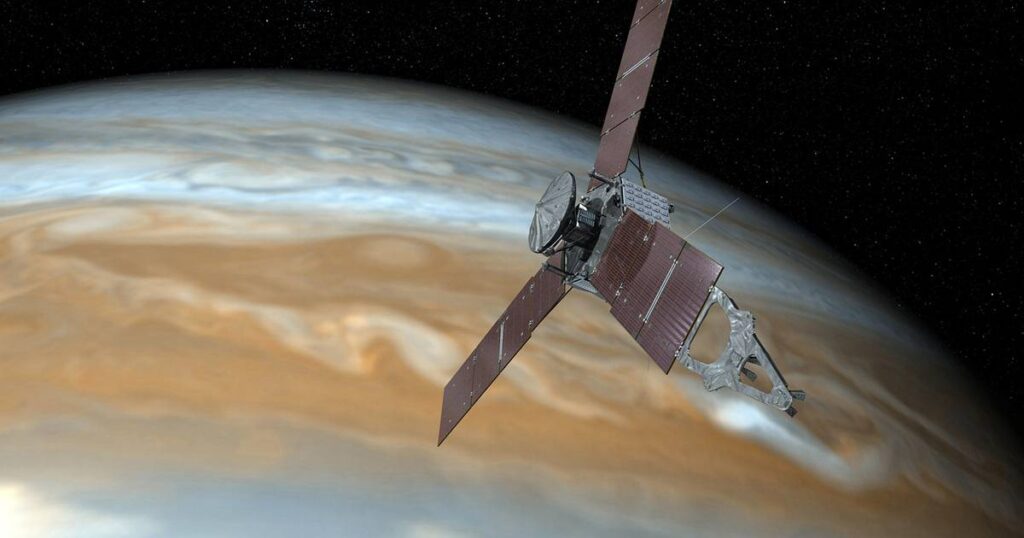In more than 20 years, NASA’s Juno probe has made the closest approach to Jupiter’s alluring, ice moon Europa.
On Thursday (US time), Juno flew within 352 kilometres of Europa, which is anticipated to have an ocean flowing beneath its thick, icy surface and may contain aquatic life. The flyby was hailed as a triumph by scientists after four images were sent down and made public a short while later.
The surface of Europa, which is similar in size to Earth’s moon, may include water jets that are visible to scientists. However, none were apparent at first glance.
The lead scientist of Juno, Scott Bolton of the Southwest Research Institute in San Antonio, stated in a statement, “We have to be at the right position at just the right time.”
With a relative velocity of almost 23 km/s, John Bordi, deputy mission manager at NASA’s Jet Propulsion Laboratory, anticipated the spacecraft to “scream by quite swiftly.”
A close-up of Europa’s equatorial region, which is dotted with ridges, troughs, and perhaps an impact crater, can be seen in the first image from the flyby.
The most recent findings will aid NASA in making plans for the Europa Clipper mission, which will take out in 2024 and reach the Jovian system in 2030.
The Jupiter Icy Moons Explorer, or Juice, which will launch next year, will also conduct near encounters.
The closest flyby of Europa was made in 2000 by NASA’s former Galileo probe, which came within 351 kilometres.
Europa, the largest moon of Jupiter, is buzzed by a NASA probe.

